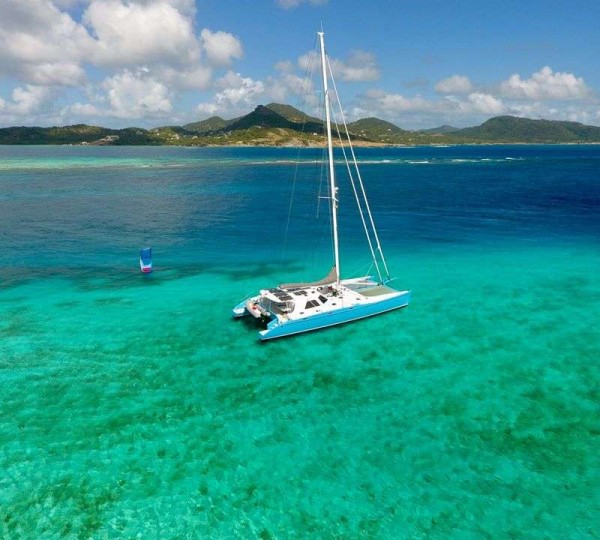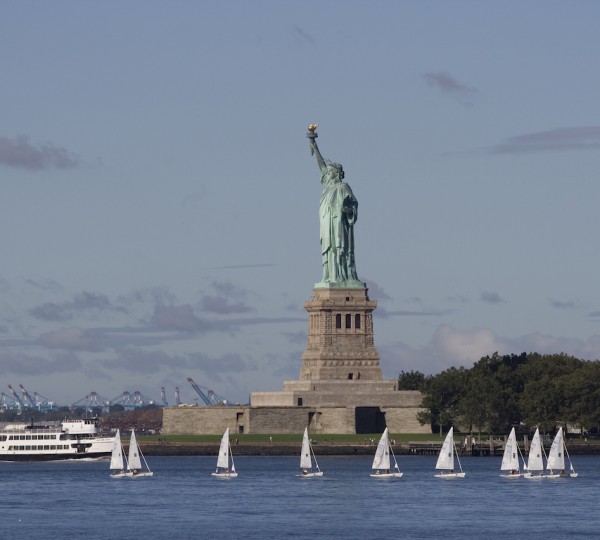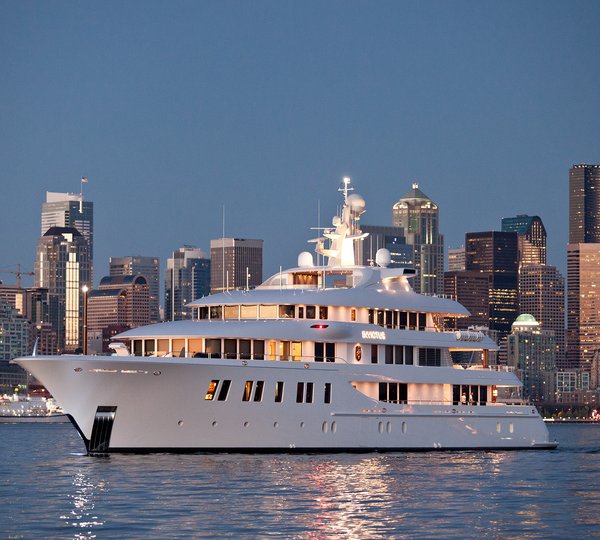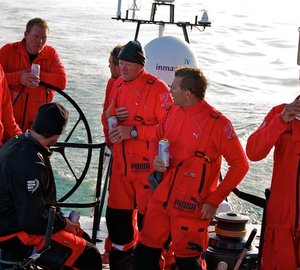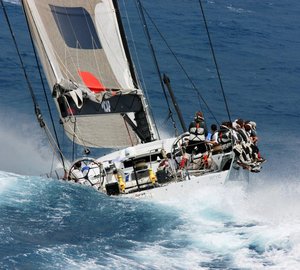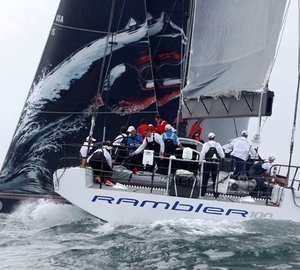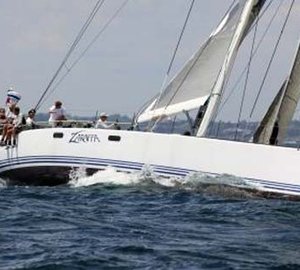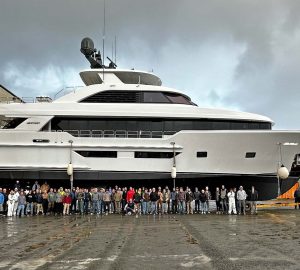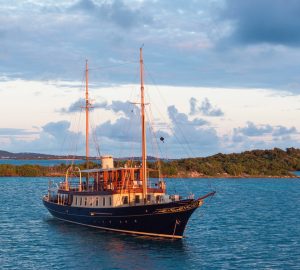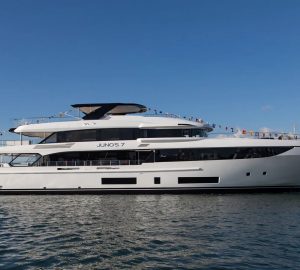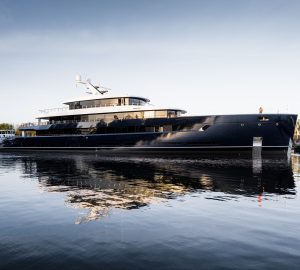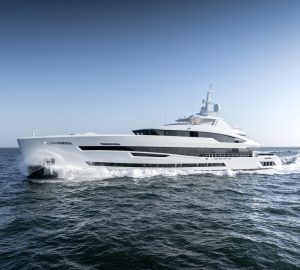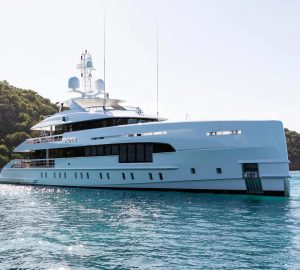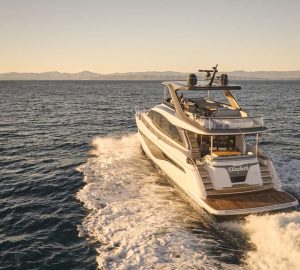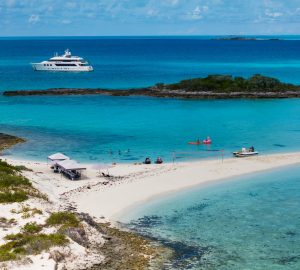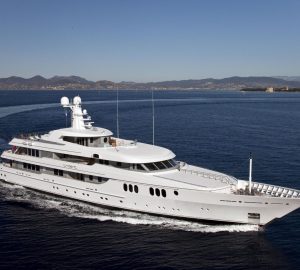Sailing yacht Nordwind and Carina have opened up a significant lead on the rest of the fleet that started the Transatlantic Race 2011 on June 26. These two yachts have stayed in good pressure, whilst the yachts behind that stayed north have not — leaving them well over 100 miles behind the frontrunners.
There was, however, high drama aboard British Soldier on Thursday night. “The wind got up to 26 knots and shifted 25 degrees to the west. Small matter of a Chinese gybe” reported skipper Nick Bate (Falmouth, U.K.). “With the boat pinned down by both the mainsail and the spinnaker rolling in the Atlantic swell, this is a serious scenario for a yacht well offshore. The British Army Team handled the situation with ease.
“Most of the team have never been onboard a boat that has broached in this manner, certainly not Rich Hall who was on the helm at the time. Martin Livingston was trimming the kite and was up to his waist in the salty stuff and the skipper was ejected from his bunk. However, British Soldier recovered without damage and is now running under the small heavy kite. A day for learning and all is under control, the off-watch is sleeping well!”
The chasing pack of yachts that took the second start in the Transatlantic Race 2011 on June 29 have caught up with the tail-end of the first starters, however, light winds are beginning to slow their progress. In IRC 2, Chris Bull’s Cookson 50 Jazz, skippered by Nigel King (Lymington, U.K.) is the boat to watch, the clear leader in Class IRC Two with Shakti owned by Avenarius & Gondesen (Hamburg, Germany) nearly 40 miles astern.
“Probably the highlight for the crew so far was being overtaken by Maltese Falcon at sunset last night,” said Jazz’s navigator, Mike Broughton (Hamble, U.K.), one of the leading tactical weather routers in this fleet as he recounted a close encounter with the 298-footer. “As competitive sailors we don’t relish being over taken by anyone. This was different.” “At nearly six times our length, she sportingly sailed through very close to leeward and we loved it – what a majestic sight she made under full sail. She planned to pass one of her boat lengths to leeward and we sneakily tried to soak down closer to try and get a free ride on her quarter wave and got down to 30 metres away as two of her stewards called across.” “What we didn’t bank on was the amount the wind dropped close to windward of her three ‘square rigged’ masts. We thought we knew about wind shadows around yachts, but this one we badly underestimated and saw an average wind of 14 knots drop to less than 10 knots as she serenely glided by. Five minutes after she passed, we gybed on a small shift and we were all quietly impressed to see her doing the same gybing on the shifts as if she were a 50 footer.”
Octogenarian Sheldon Huntington (Shelburne, Vt.) continues to dominate IRC Three with his Reichel Pugh 66 Zaraffa, although light winds have significantly slowed their progress. This morning there was barely six knots of wind, however, Zaraffa was still achieving a boat speed of close to 10 knots as her sails and hull are optimized to use the apparent wind created by the boat.
While Scho-ka-kola is currently second in IRC Three on corrected time, one yacht worth watching at the moment is Ambersail whose Lithuanian crew has taken up a very southerly position. This morning they were struggling for boat speed in light air, but there is plenty of wind coming their way and they should get into this fresh pressure before Zaraffa and Ambersail may feature higher up the leader board tomorrow.
So far the Transatlantic Race 2011 has not lived up to its billing as a tough race. Fresh conditions, however, are expected for the six yachts that will take the third and final start on Sunday, July 3, at 1350 Eastern Daylight Time when the warning signal is fired at Castle Hill Lighthouse. At the send-off reception for them last evening at Harbour Court, New York Yacht Club trustee Clay Deutsch described the occasion as ‘unleashing the hounds’. The yachts that will set off from Newport tomorrow are capable of covering over 500 miles a day. Given the right conditions, these greyhounds of ocean racing could be tearing through the pack ahead of them come Monday.


